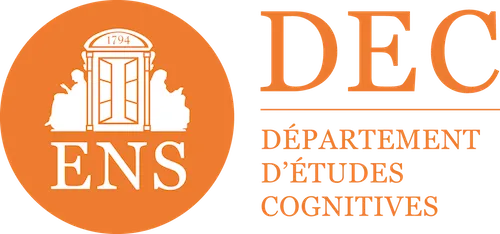

TMS & LMS: what are the differences?
To remain competitive, businesses need to invest in effective solutions for the training of their employees. That's where Learning Management Systems (LMS) and Training Management Systems (TMS) come in. These two tools, although similar in appearance, have distinct functions that meet specific needs.
LMS, or learning management systems, are designed to design, centralize and distribute online training content. These platforms make it possible to create interactive courses, monitor learners' progress, and improve engagement through features such as quizzes or multimedia resources. In contrast, TMS, or training management systems, focus on administrative and logistical management of training programs. Ideal for organizing sessions, managing registrations and monitoring budgets, TMS can significantly alleviate the administrative burden on HR departments (source).
For HR decision makers and training managers, choosing between an LMS and a TMS is a strategic decision that can influence productivity and skills development within the company. The purpose of this article is to provide you with a detailed analysis of the differences between these two systems and to help you determine which one best fits your needs. Get ready to thoroughly explore the features, benefits, and use cases of LMS and TMS in order to make an informed and strategic choice for your business.
I. What is an LMS?
A Learning Management System (LMS), or learning management system, is a software platform designed to centralize, manage and deliver educational content online, but also, and increasingly, to design it. Imagine a digital library where your employees can access courses, training modules, and educational resources anytime and from anywhere. Practical, no?
Main features
An LMS offers a variety of functionalities to optimize learning and training management:
- Design and delivery of e-learning courses : A good LMS makes it easy to create interactive courses, by integrating videos, quizzes, PDFs, and other multimedia materials. For example, Didask offers intuitive tools to structure and personalize your educational content. Thanks to his educational artificial intelligence, Didask even allows novices to create modules in record time, making the design process accessible to everyone in the company.
- Monitoring learners' progress : Through dashboards and detailed reports, an LMS makes it possible to monitor the progress of each learner, identify gaps and personalize training paths accordingly. This feature is essential to ensure effective skills development.
- Assessment and certification tools : LMSs often include tools to assess the knowledge and skills acquired, and to issue certificates of achievement. This is particularly useful for businesses that need to prove compliance with regulations or professional standards.
- Multimedia integration and mobile compatibility : To engage learners, a modern LMS supports various types of multimedia content and is accessible on various devices, including smartphones and tablets. Didask, for example, optimizes the user experience with a mobile-friendly interface.
Benefits of an LMS
The benefits of an LMS for businesses are numerous:
- Improved accessibility : Employees can follow the courses at their own pace and according to their schedule, which is particularly beneficial for businesses with geographically dispersed teams.
- Learner engagement : Interactive features and gamification elements increase learner engagement and motivation. We talk about this in more detail in our article In eLearning, how can you improve the engagement of your LMS?
- Monitoring and reporting : The ability to generate detailed reports allows HR managers to measure the effectiveness of training courses and make informed decisions.
- Reduced cost : By opting for online training, businesses can reduce the costs associated with travel, room rentals, and trainers.
For more details on optimizing the use of LMS, I invite you to consult our article Learning Management System: Optimizations for Businesses on our blog.
II. What is a TMS?
A Training Management System (TMS), or training management system, focuses more on logistics and administration of training programs. If an LMS is your digital library, think of the TMS as your highly organized administrative assistant who makes sure every detail is taken care of.
Main features
TMS include robust functionalities to manage the administrative aspects of training courses:
- Planning and managing training sessions : TMS make it easy to plan training sessions, by managing schedules, rooms, equipment, and instructors. A good TMS ensures that every session goes off without a hitch.
- Management of registrations and participants : They allow you to manage participants' registrations, track their attendance and manage waiting lists. This ensures a smooth organization and a better experience for participants.
- Monitoring budgets and expenses : A TMS helps to track training costs, manage budgets, and optimize expenses. This is crucial for businesses that want to maximize their return on investment in training.
- Compliance and certification tools : These systems ensure that training programs respect industry regulations and standards, and allow employee certifications to be monitored.
Benefits of a TMS
The benefits of a TMS for businesses include:
- Centralized management : A TMS centralizes all training data and operations, thus simplifying management and coordination.
- Optimization of resources : By effectively planning resources and tracking costs, TMS allow optimal use of available resources.
- Improving compliance : Monitoring regulatory certifications and training helps maintain compliance with industry standards.
- Reduction of administrative tasks : By automating numerous administrative tasks, a TMS frees up time for HR teams, allowing them to focus on strategic initiatives.
If you are looking to optimize your training management with an effective LMS, and see how our platform can help you reduce your administrative burden and improve the efficiency of your programs, I invite you to visit the Didask site.

III. Comparison of LMS and TMS
Now that we've explored what LMS and TMS are, let's take a closer look at the differences to help you make an informed choice. While these two systems have distinct goals, they can sometimes complement each other.
Key differences
- Orientation
- LMS : Focused on learners and educational content. An LMS, like the one offered by Didask, makes it possible to create, distribute and follow online training modules, thus offering a complete and interactive learning experience. Think of an LMS as a superhero in training, always ready to save the day with engaging courses and interactive quizzes!
- TMS : Focused on the administration and logistics of training courses. A TMS ensures that all training operations, from planning to execution, run smoothly. Think of it as an ultra-organized personal assistant who never forgets a meeting.
- Primary users
- LMS : Used by trainers, learners, and e-learning professionals. It is ideal for businesses looking to improve the skills of their employees through online courses.
- TMS : Used by training administrators, HR, and program managers. Perfect for organizations that require rigorous management of in-person training and associated resources.
- Objectives
- LMS : Improve the learning experience and employee engagement through interactive and personalized online courses.
- TMS : Optimize the administrative and logistical operations of training courses, by ensuring that every detail is well managed, from registrations to cost monitoring.
Complementarity
It is important to note that in some cases, businesses may benefit from using both systems in combination. For example, a business could use an LMS to deliver online content while using a TMS to manage in-person training sessions and logistics resources.
To illustrate this complementarity, imagine a company that organizes face-to-face training for its new employees while offering online training modules for the continuous development of skills. Didask's LMS, with its ability to quickly create modules using AI, can be used for online training, while a TMS will manage the logistics of face-to-face sessions.
IV. How do I choose between an LMS and a TMS?
Making the right choice between an LMS and a TMS depends on your specific needs and business goals. Here are a few things to consider to help you make an informed decision.
Needs analysis
- Training Objectives
- If your priority is to provide educational content and improve the learning experience of your employees, An LMS will be your ally. For example, Didask's LMS, with its educational AI, makes it possible to create modules in record time, which is ideal for fast and effective training.
- If you need to manage a lot of logistical aspects of training, a TMS could be the ideal solution. It will allow you to manage registrations, schedules and budgets with great efficiency.
- Organization size
- For large businesses with complex training management needs, a combination of LMS and TMS can offer a comprehensive solution. Didask can provide seamless integration to meet these varied needs.
- Small and medium-sized businesses with primarily online training needs may find that an LMS alone is sufficient for their goals.
Assessment of benefits
- Cost efficiency
- An LMS like Didask's can reduce training costs by eliminating the need for space and travel for in-person training.
- A TMS, by automating administrative tasks, can reduce the costs associated with managing training programs.
- Scalability
- An LMS can easily evolve to accommodate a growing number of courses and learners. It's ideal for growing businesses.
- A TMS is also scalable, allowing multiple training sessions to be managed simultaneously at different locations.
- User engagement
- The interactive features of an LMS, like those offered by Didask, increase learner engagement and make learning more effective.
- By optimizing logistics, a TMS ensures that training courses run smoothly, which improves the overall experience of participants.
For personalized help in choosing between an LMS and a TMS, you can explore our article How to properly use LMS in professional training.
Conclusion
In summary, the choice between an LMS and a TMS depends on the specific needs of your organization. If you're looking to improve the learning experience and employee engagement, an LMS like Didask's could be the perfect fit. On the other hand, if you need to optimize the logistics and administrative management of training courses, a TMS will be more suitable.
In any case, Didask is there to support you in your digital transformation of training. Do not hesitate to visit our page LMS Didask to find out how we can meet your specific needs. For impeccable administrative management of your training courses, explore how our platform can help you reduce your administrative burden and improve the efficiency of your programs. Contact us for a free demo!
To continue exploring the subject of LMS, check out our articles:
- LMS, AI and cognitive sciences, the winning e-learning jackpot
- How to change LMS... without a gas factory!
- LMS, LXP, LCMS, authoring tool... How do you choose your learning equipment?
- 10 key steps to implement an LMS in your business
- The great history of e-learning platforms
- LMS: 3 prejudices to bury once and for all!
Make an appointment directly with our eLearning experts for a demo or simply more information.












